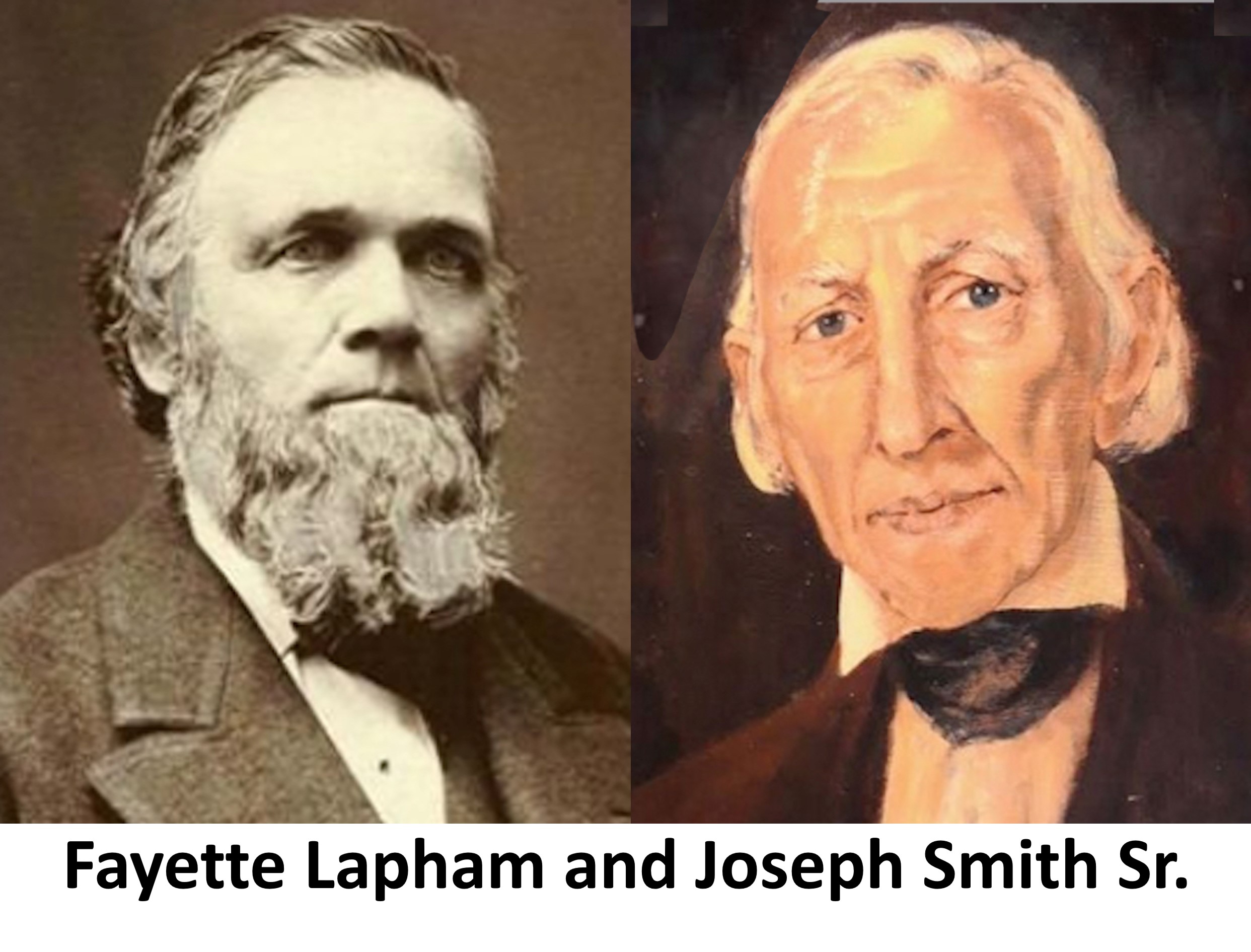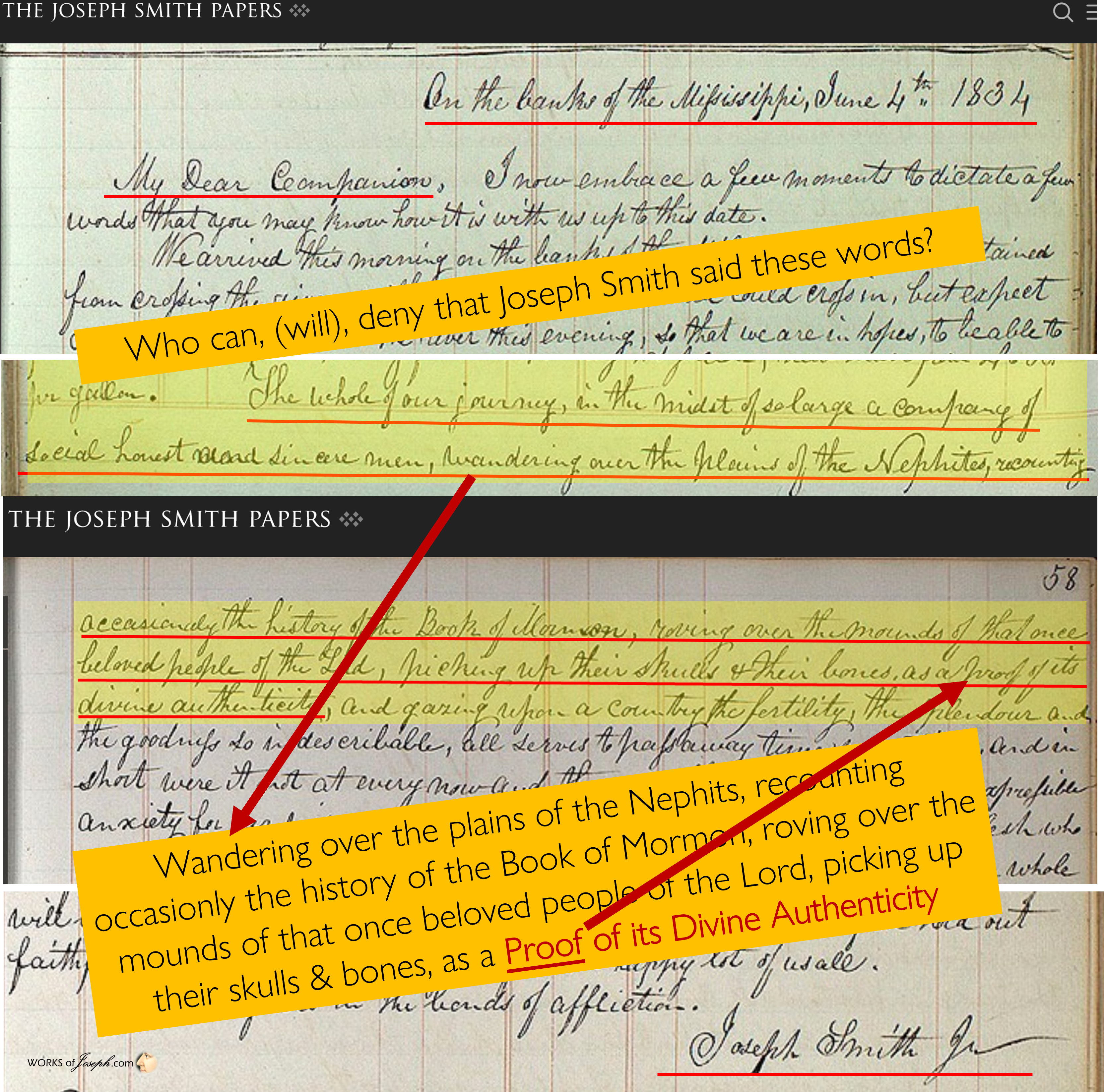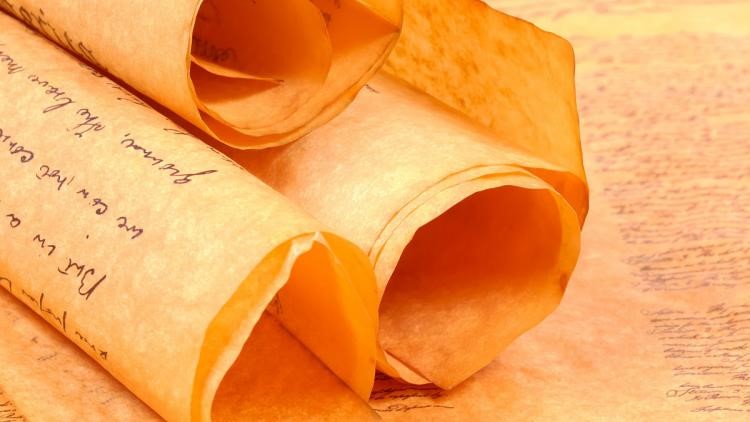
Remember the Interpreters came from the Brother of Jared when the Lord touched those two additional stones, (Ether 3:23) and they were sealed up and later Mosiah received them and possibly Lehi before and finally sealed up by Moroni before Moroni showed them to Joseph Smith.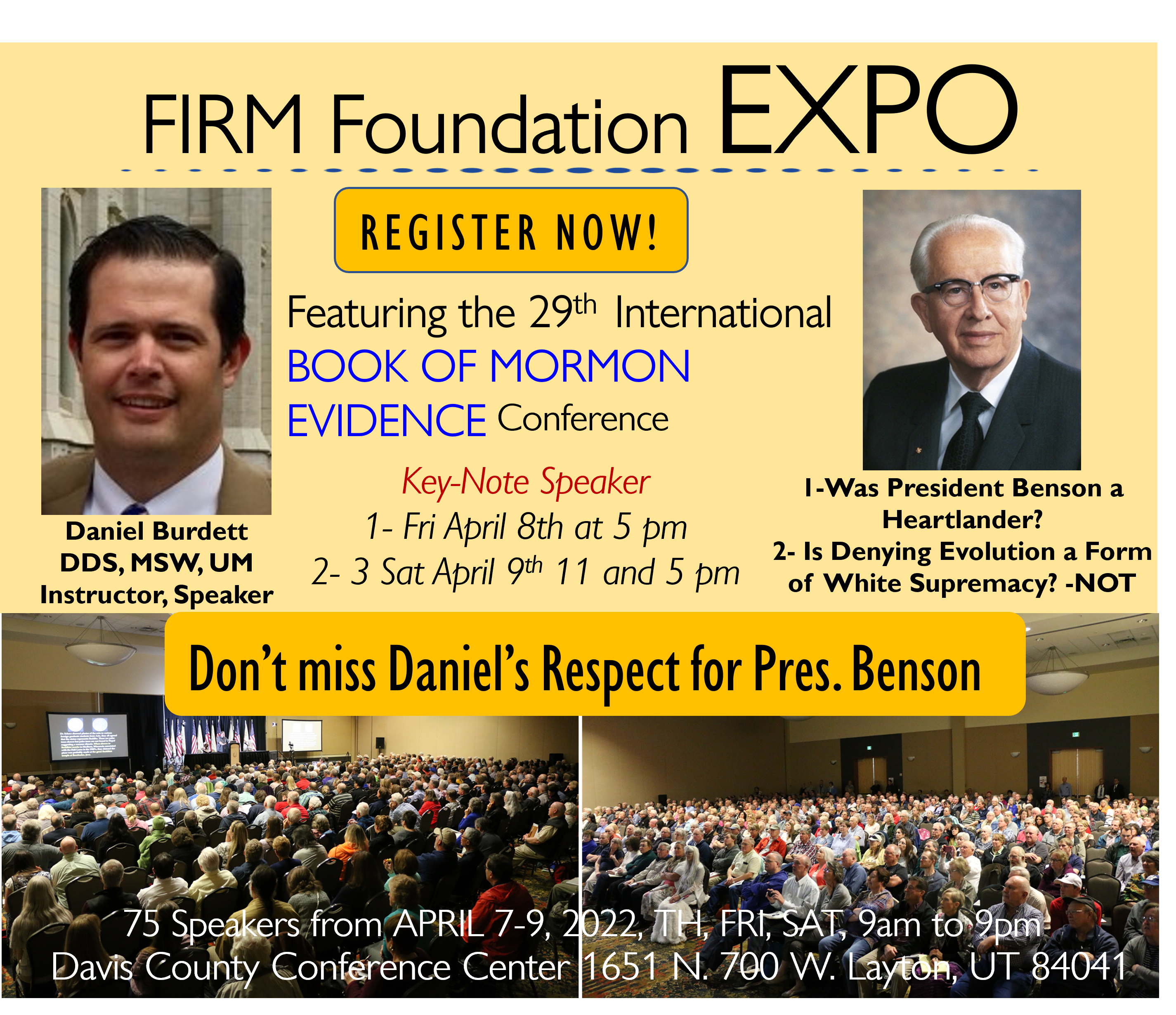 Purchase Tickets Now!
Purchase Tickets Now!
A Passover Setting for Lehi’s Exodus
Don Bradley Interpreter: A Journal of Latter-day Saint Faith and Scholarship
Abstract: Later in his life, former Palmyra resident Fayette Lapham recounted with sharp detail an 1830 interview he conducted with Joseph Smith Sr. about the coming forth of the Book of Mormon. Among the details he reports that Lehi’s exodus from Jerusalem occurred during a “great feast.” This detail, not found in the published Book of Mormon, may reveal some of what Joseph Sr. knew from the lost 116 pages. By examining the small plates account of this narrative in 1 Nephi 1−5, we see not only that such a feast was possible, but that Lehi’s exodus and Nephi’s quest for the brass plates occurred at Passover. This Passover setting helps explain why Nephi killed Laban and other distinctive features of Lehi’s exodus. Read in its Passover context, the story of Lehi is not just the story of one man’s deliverance, but of the deliverance of humankind by the Lamb of God. The Passover setting in which it begins illuminates the meaning of the Book of Mormon as a whole.
[Editor’s Note: This article is an excerpt from Chapter 7 of the author’s book, The Lost 116 Pages: Reconstructing the Book of Mormon’s Lost Stories (Salt Lake City: Kofford Books, 2019).]

This chapter examines the narrative of 1 Nephi 1−5 as a series of events occurring at the Passover season, beginning with Lehi’s theophany (vision of God) at the start of the Passover month of Nisan and culminating with Nephi’s slaying of Laban on the final day of the Jewish Passover celebration.1 Although this text comprises five chapters in the current Latter-day Saint edition of the Book of Mormon, it [Page 120]constitutes just one chapter — the original 1 Nephi Chapter I — in the first edition of the Book of Mormon and presents a single overarching narrative of the escape of Lehi’s family from destruction in Jerusalem and the beginning of their exodus to a new promised land. Read against the backdrop of the Passover season, the narrative of Lehi’s exodus is not merely a narrative of one family’s deliverance from temporal destruction but also a typological narrative of the redemption of humanity by the divine Lamb of God.
Fayette Lapham’s Interview with Joseph Smith Sr.

In early 1830, shortly before the Book of Mormon came off the Grandin press, Palmyra businessman Fayette Lapham and his brother-in-law Jacob Ramsdell called at the Joseph Smith Sr. home in Manchester to get information on the forthcoming book.2 As Palmyra residents, Lapham and Ramsdell would have heard the considerable buzz in town about the Book of Mormon but were not yet able to satisfy their curiosity by reading its pages. Instead, the two young men enjoyed the rare privilege of hearing the Prophet’s father relate the story of the Book of Mormon’s emergence, and they were given an oral sneak preview of its contents. Four decades later, Lapham published an extensive account of this interview [Page 121]in an 1870 issue of The Historical Magazine.3 Despite the lapse of years and the account’s occasional garbling of fact, Lapham’s narration is filled with firsthand information that demonstrates his reliance on a primary source with knowledge of the actual information and events, indicating that he may have written his newspaper account from detailed notes of his interview with Joseph Sr.4 Whether Lapham’s source was interview notes or an extraordinary memory, his accuracy on many obscure but confirmable details, such as the order in which Joseph Smith translated Mormon’s abridgement and Nephi’s small plates after the manuscript loss, lends credence to additional, unique details he provides.5
In relating Nephite history, Lapham’s account largely retells familiar Book of Mormon stories. Yet at key points it also adds to the existing narrative some story elements not found in the published Book of Mormon. These additional pieces of Nephite narrative, though new or unknown, fit remarkably well into the familiar, known narrative, suggesting that they are not errors but echoes of narrative from the lost pages. Surprisingly, the interview account gives nearly five times as much [Page 122]space to the period of the narrative covered by the lost pages as it does to the period that follows the lost portion. One wonders if the Prophet’s father, realizing his interviewers would not be able to read the fuller Nephite narrative given in the lost manuscript, attempted to provide more of that early narrative than the published book would provide. This seems to be the most probable explanation for the additional Nephite narrative given in Lapham’s account.
Despite his intellectual interest, Lapham was never a believer in Joseph Jr. as a prophet and appears to have never even read the Book of Mormon. In fact, Lapham came away from his interview with Joseph Sr. believing the Book of Mormon to be a hoax, which obviated his need to read it. Given this lack of familiarity with the book, and especially its missing pages, it is unlikely that Lapham could have identified what was missing from lost manuscript narrative and constructed elements that fill those gaps and fit the pattern of Book of Mormon narrative. Source
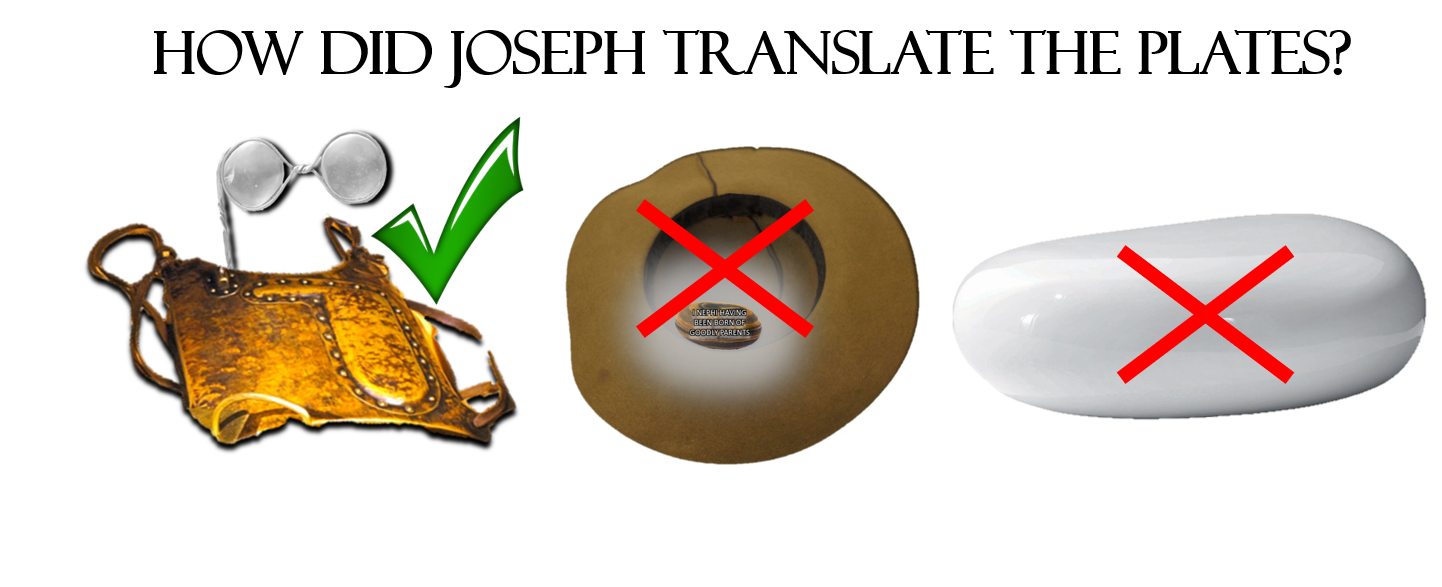
Historical Magazine (second series)/ Volume 7/ May 1870/Interview with the Father of Joseph Smith
“Interview with the Father of Joseph Smith, the Mormon Prophet, Forty Years Ago. His Account of the Finding of the Sacred Plates” (1870) [La]Fayette Lapham
Republished in Vogel, Dan (1996), Early Mormon Documents, vol.1,Salt Lake City Signature Books, ISBN 1-56085-072-8.
I think it was in the year 1830, I heard that some ancient records had been discovered that would throw some new light upon the subject of religion; being deeply interested in the matter, I concluded to go to the place and learn for myself the truth of the matter. Accompanied by a friend, Jacob Ramsdell, I set out to find the Smith family, then residing some three or four miles South of the village of Palmyra, Wayne county, New York, and near the line of the town of Manchester. Joseph, Junior, afterwards so well known, not being at home, we applied to his father for the information we wanted. This Joseph Smith, Senior, we soon learned, from his own lips, was a firm believer in witchcraft and other supernatural things; and had brought up his family in the same belief. He also believed that there was a vast amount of money buried somewhere in the country; that it would some day be found; that he himself had spent both time and money searching for it, with divining rods, but had not succeeded in finding any, though sure that he eventually would.
In reply to our question, concerning the ancient records that had been found, he remarked that they had suffered a great deal of persecution on account of them; that many had been there for that purpose, and had made evil reports of them, intimating that perhaps we had come for a like purpose; but, becoming satisfied of our good intentions and that we only sought correct information, he gave us the following history, as near as I can repeat his words:
His son Joseph, whom he called the illiterate, when about fourteen years of age, happened to be where a man was looking into a dark stone and telling people, therefrom, where to dig for money and other things. Joseph requested the privilege of looking into the stone, which he did by putting his face into the hat where the stone was. It proved to be not the right stone for him; but he could see some things, and, among them, he saw the stone, and where it was, in which he could see whatever he wished to see. Smith claims and believes that there is a stone of this quality, somewhere, for every one. The place where he saw the stone was not far from their house; and, under pretense of digging a well, they found water and the stone at a depth of twenty or twenty-two feet. After this, Joseph spent about two years looking into this stone, telling fortunes, where to find lost things, and where to dig for money and other hidden treasure.”
Editors note: To me personally this Lapham information is not a reliable source for the truth about the translation method.
Scripture tells us the true method of translation in over 8 places in the scriptures. I include one here from JSH 1:35 that says, “Also, that there were two stones in silver bows—and these stones, fastened to a breastplate, constituted what is called the Urim and Thummim—deposited with the plates; and the possession and use of these stones were what constituted “seers” in ancient or former times; and that God had prepared them for the purpose of translating the book.” I have written a large volume of information about the Proper translation with the interpreters and the spectacles, and you can download a free 26-page edition of my information here.
Nowhere in the scriptures does it say anything about a stone in a hat that Joseph used for translation. This painting I had commissioned by Anne Oborn is how I envision the translation. Read more in the PDF link above.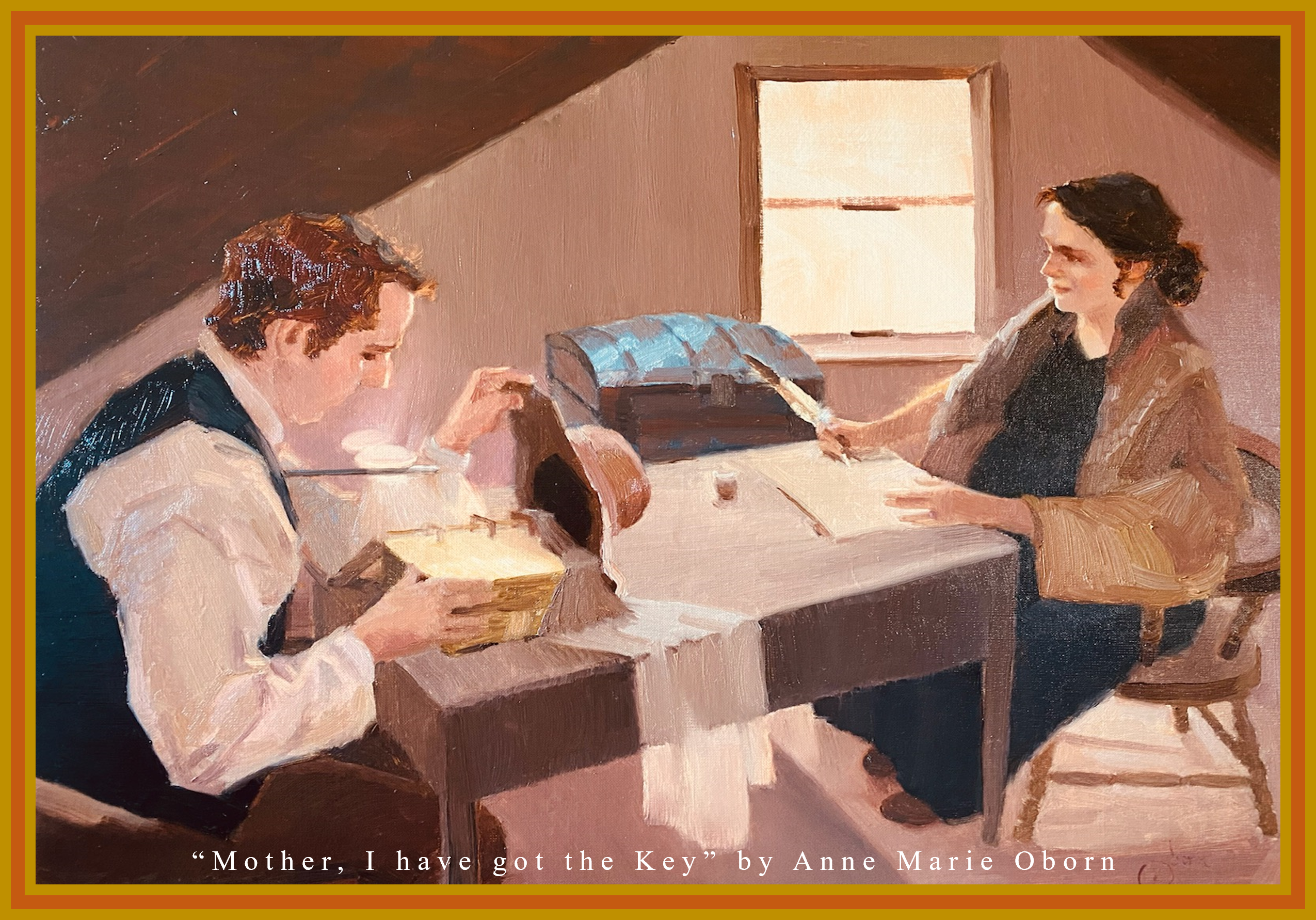
 I love this book by James and Hannah Stoddard. SEER STONE V. URIM & THUMMIM: BOOK OF MORMON TRANSLATION ON TRIAL (BOOK) $20.00. Seer Stone v. Urim and Thummim places the Book of Mormon translation on trial, presenting the latest research in one of the most comprehensive treatments of the translation process to date providing encouragement for Latter-day Saints who fear they have been “betrayed” by the translation history taught by the Church for over 190 years. Purchase Here
I love this book by James and Hannah Stoddard. SEER STONE V. URIM & THUMMIM: BOOK OF MORMON TRANSLATION ON TRIAL (BOOK) $20.00. Seer Stone v. Urim and Thummim places the Book of Mormon translation on trial, presenting the latest research in one of the most comprehensive treatments of the translation process to date providing encouragement for Latter-day Saints who fear they have been “betrayed” by the translation history taught by the Church for over 190 years. Purchase Here
Lapham continues, “About this time he became concerned as to his future state of existence, and was baptized, becoming thus a member of the Baptist Church. Soon after joining the Church, he had a very singular dream; but he did not tell his father of his dream, until about a year afterwards. He then told his father that, in his dream, a very large and tall man appeared to him, dressed in an ancient suit of clothes, and the clothes were bloody. And the man said to him that there was a valuable treasure, buried many years since, and not far from that place; and that he had now arrived for it to be brought to light, for the benefit of the world at large; and, if he would strictly follow his directions, he would direct him to the place where it was deposited, in such a manner that he could obtain it.
He then said to him, that he would have to get a certain coverlid, which he described, and an old-fashioned suit of clothes, of the same color, and a napkin to put the treasure in; and go to a certain tree, not far distant, and when there, he would see other objects that he would take or keep in range and follow, until he was directed to stop, and there he would find the treasure that he was in pursuit of; and when he had obtained it, he must not lay it down until he placed it in the napkin. “And,” says Smith, “in the course of a year, I succeeded in finding all the articles, as directed; and one dark night Joseph mounted his horse, and, aided by some supernatural light, he succeeded in finding the starting point and the objects in range.” Following these, as far as he could with the horse without being directed to stop, he proceeded on foot, keeping the range in view, until he arrived at a large boulder, of several tons weight, when he was immediately impressed with the idea that the object of his pursuit was under that rock. Feeling around the edge, he found that the under side was fiat. Being a stout man, and aided by some super-natural power, he succeeded in turning the rock upon its edge, and under it he found a square block of masonry, in the centre of which were the articles referred to by the man seen in the dream. Taking up the first article, he saw others below; laying down the first, he endeavored to secure the others; but, before he could get hold of them, the one he had taken up slid back to the place he had taken it from, and, to his great surprise and terror, the rock immediately fell back to its former place, nearly crushing him in its descent. His first thought was that he had not properly secured the rock when it was turned up, and accordingly he again tried to lift it, but now in vain; he next tried with the aid of levers, but still without success. While thus engaged, he felt something strike him on the breast, which was repeated the third time, always with increased force, the last such as to lay him upon his back. As he lay there, he looked up and saw the same large man that had appeared in his dream, dressed in the same clothes. He said to him that, when the treasure was deposited there, he was sworn to take charge of and protect that property, until the time should arrive for it to be exhibited to the world of mankind; and, in order to prevent his making an improper disclosure, he was murdered or slain on the spot, and the treasure had been under his charge ever since.
He said to him that he had not followed his directions; and, in consequence of laying the article down before putting it in the napkin, he could not have the article now; but that if he would come again, one year from that time, he could then have them. The year passed over before Joseph was aware of it, so time passed by; but he went to the place of deposit, where the same man appeared again, and said he had not been punctual in following his directions, and, in consequence, he could not have the article yet. Joseph asked when he could have them; and the answer was, “Come in one year from this time, and bring your oldest brother with you; then you may have them.” During that year, it so happened that his oldest brother died; but, at the end of the year, Joseph repaired to the place again, and was told by the man who still guarded the treasure, that, inasmuch as he could not bring his oldest brother, he could not have the treasure yet; but there would be another person appointed to come with him in one year from that time, when he could have it. Joseph asked, “How shall I know the person?” and was told that the person would be known to him at sight.

During that year, Joseph went to the town of Harmony, in the State of Pennsylvania, at the request of some one who wanted the assistance of his divining rod and stone in finding hidden treasure, supposed to have been deposited there by the Indians or others. While there, he fell in company with a young woman; and, when he first saw her, he was satisfied that she was the person appointed to go with him to get the treasure he had so often failed to secure. To insure success, he courted and married her. When his work was ended at Harmony, he returned with her to his father’s, in Wayne county; and, at the expiration of the year, he procured a horse and light wagon, with a small chest and a pillow-case, and proceeded, punctually, with his wife, to find the hidden treasure. When they had gone as far as they could with the wagon, Joseph took the pillow-case and started for the rock.
Upon passing a fence, a host of devils began to screech and to scream, and made all sorts of hideous yells, for the purpose of terrifying him and preventing the attainment of his object; but Joseph was courageous, and pursued his way, in spite of them all. Arriving at the stone, he again lifted it, with the aid of superhuman power, as at first, and secured the first, or uppermost article, this time putting it carefully into the pillow-case, before laying it down. He now attempted to secure the remainder; but just then the same old man appeared, and said to him, that the time had not yet arrived for their exhibition to the world; but that when the proper time came he should have them, and exhibit them with the one he had now secured; until that time arrived, no one must be allowed to touch the one he had in his possession; for if they did, they would be knocked down by some superhuman power. Joseph ascertained that the remaining articles were a gold hilt and chain, and a gold ball with two pointers. The hilt and chain had once been part of a sword of unusual size; but the blade had rusted away and become useless. Joseph then turned the rock back, took the article in the pillow-case, and returned to the wagon; the devils, with more hideous yells than before, followed him to the fence; as he was getting over the fence, one of the devils struck him a blow on his side, where a black and blue spot remained three or four days; but Joseph persevered and brought the article safely home. “I weighed it,” said Mr. Smith, Senior, “and it weighed thirty pounds.” continued


Two Depositories in Hill Cumorah
“The hill Cumorah, with the surrounding vicinity, is distinguished as the great battlefield on which, and near which, two powerful nations were concentrated with all their forces. Men, women and children fought till hundreds of thousands on both sides were hewn down, and left to molder upon the ground. . . .
These new plates were given to Moroni to finish the history. And all the ancient plates, Mormon deposited in Cumorah, about three hundred and eighty-four years after Christ. When Moroni, about thirty-six years after, made the deposit of the book entrusted to him, he was, without doubt, inspired to select a department of the hill separate from the great depository of the numerous volumes hid up by his father. The particular place in the hill where Moroni secreted the book, was revealed, by the angel, to the prophet Joseph Smith, to whom the volume was delivered in September, A.D. 1827. But the grand repository of all the numerous records of the ancient nations of the western continent, was located in another department of the hill, and it’s contents under the charge of holy angels, until the day should come for them to be transferred to the sacred temple of Zion.” 1866 Orson Pratt Millennial Star (28 (27): 417)
Continued, “In answer to our question, as to what it was that Joseph had thus obtained, he said it consisted of a set of gold plates, about six inches wide, and nine or ten inches long. They were in the form of a book, half an inch thick, but were not bound at the back, like our books, but were held together by several gold rings, in such a way that the plates could be opened similar to a book. Under the first plate, or lid, he found a pair of spectacles, about one and a half inches longer than those used at the present day, the eyes not of glass, but of diamond. On the next page were representations of all the masonic implements, as used by masons at the present day. The remaining pages were closely written over in characters of some unknown tongue, the last containing the alphabet of this unknown language. Joseph, not being able to read the characters, made a copy of some of them, which he showed to some of the most learned men of the vicinity. All the clue he could obtain was from George Crane, who said he had seen a Pass that had been given to Luther Bradish, when traveling through the Turkish dominions; and he thought the characters resembled those of that Pass.
Accordingly, Joseph went to Franklin-county, and saw Mr. Bradish, who could not read the strange characters, but advised him to return home and go into other business. But Joseph was not willing to give up the matter, without further trial; and from Franklin county he went to New York city, where the most learned man then in the city told him that, with few exceptions, the characters were Arabic, but not enough to make any thing out. Returning home, he one day tried the spectacles, and found that, by looking through them, he could see everything—past, present, and future—and could also read and understand the characters written on the plates. Before proceeding to translate the characters, Joseph was directed to choose twelve Apostles, who must be men who believed in the supernatural. He would not err in cho[o]sing them, as he would know the proper persons as soon as he saw them. One was to be a Scribe. After much opposition, Joseph succeeded in finding the requisite number of believers, among them Martin Harris, who was chosen Scribe. After having made these necessary arrangements, Joseph was directed not to make the translation where there was so much opposition; hence, after procuring the necessary materials, he and Martin went to Harmony, in Pennsylvania, where they would be less persecuted, and where Joseph, with spectacles on, translated the characters on the gold plates, and Harris recorded the result.
After thus translating a number of plates, Harris wanted to return to Palmyra, taking a part of the writings with him; but the Lord objected, for fear that Harris would show them to unbelievers, who would make sport and derision of them. But Harris finally obtained leave to take them, on condition that he should let no one see them, except those who believed in them; in this he was indiscreet, and showed them to some one that he ought not to. When he next went to his drawer to get them, behold! they were not there; the Lord had taken them away.

Joseph and Harris returned to Harmony, and found the plates missing—the Lord had taken them also. Then Joseph put on the spectacles, and saw where the Lord had hid them, among the rocks, in the mountains. Though not allowed to get them, he could, by the help of the spectacles, read them where they were, as well as if they were before him. They were directed not to re-translate the part already gone over, for fear the new work would not correspond, in every particular, with the old; their enemies might take advantage of that circumstance, and condemn the whole. But they could begin where they left off, and translate until they were directed to stop; for, in consequence of their indiscretion, they would not be allowed to translate the whole, at present. At some future time, they would be allowed to translate the whole; and then their translation, the gold plates, the gold hilt, ball and pointers could all be circulated together, each a witness of the others.
In answer to our question as to the subject of the translation, he said it was the record of a certain number of Jews, who, at the time of crossing the Red Sea, left the main body and went away by themselves; finally became a rich and prosperous nation; and, in the course of time, became so wicked that the Lord determined to destroy them from off the face of the earth. But there was one virtuous man among them, whom the Lord warned in a dream to take his family and depart, which he accordingly did; and, after traveling three days, he remembered that he had left some papers, in the office where he had been an officer, which he thought would be of use to him in his journeyings. He sent his son back to the city to get them; and when his son arrived in the city, it was night, and he found the citizens had been having a great feast, and were all drunk. When he went to the office to get his father’s papers he was told that the chief clerk was not in, and he must find [him] before he could have the papers. He then went into the street in search of him; but every body being drunk, he could get but little information of his whereabouts, but, after searching a long time, he found him lying in the street, dead drunk, clothed in his official habiliments, his sword having a gold hilt and chain, lying by his side—and this is the same that was found with the gold plates. Finding that he could do nothing with him in that situation, he drew the sword, cut off the officer’s head, cast off this own outer garments, and, assuming those of the officer, returned to the office where the papers were readily obtained, with which he returned to where his father was waiting for him.

The family then moved on, for several days, when they were directed to stop and get materials to make brass plates upon which to keep a record of their journey; also to erect a tabernacle, wherein they could go and inquire whenever they became bewildered or at a loss what to do. After all things were ready, they started on their journey, in earnest; a gold ball went before them, having two pointers, one pointing steadily the way they should go, the other the way to where they could get provisions and other necessaries. After traveling many days, they came to a mountain, from which they were directed to get gold plates to keep their records upon, and to transfer to them those already on the brass plates. Finishing these, they resumed their journey; and, after traveling many days, came to a wide water, where they were directed to build a vessel. When this was completed, they set sail, still directed by the gold ball. After sailing a long time, they came to land, went on shore, and thence they traveled through boundless forests, until, at length, they came to a country where there were a great many lakes; which country had once been settled by a very large race of men, who were very rich, having a great deal of money. From some unknown cause, this nation had become extinct; “but that money,” said Smith, “is here, now, every dollar of it.” When they, the Jews, first beheld this country, they sent out spies to see what manner of country it was, who reported that the country appeared to have been settled by a very large race of men, and had been, to all appearances, a very rich agricultural and manufacturing nation. They also found something of which they did not know the use, but when they went into the tabernacle, a voice said, “What have you got in your hand, there?” They replied that they did not know, but had come to inquire; when the voice said, “Put it on your face, and put your face in a skin, and you will see what it is.” They did so, and could see everything of the past, present, and future; and it was the same spectacles that Joseph found with the gold plates.
The gold ball stopped here and ceased to direct them any further; the family took possession of the country; their descendants became a great nation; among them were prophets who foretold the coming of Christ, and said that, as a sign of his coming, there would be three days in which there would be no night, for the light of day would continue during three days. In process of time the sign appeared as foretold by the prophets; and when Christ left Jerusalem he came to this nation; and, finding them much more perfect and harmonious in their religious views than the Jews were at Jerusalem, he was more particular in giving them instructions as to baptism, and said they must go down into the water, and be put under the water, and come up out of the water. But, after this, they became corrupt and wicked; enmity and discord prevailed among them, to such an extent, that they could no longer dwell together; hence they divided up into tribes, were scattered over the face of the earth, and their descendants are the American Indians.

At this point, the interview came to an end; and my friend and myself returned home, fully convinced that we had smelt a large mice.” Historical Magazine (second series)/Volume 7/May 1870/Interview with the Father of Joseph Smith by Lafayette Lapham

After praying about it I didn’t smelt a large mice, but I felt the story was very interesting. I believe the Story of Laban was probably during a festival in Jerusalem, and likely Lehi or Nephi had the Urim and Thummim, as you see in my painting below. Also to hear about Lehi erecting a temple in the wilderness is very interesting. Lapham also said Joseph Smith Sr. said, “Under the first plate, or lid, he found a pair of spectacles, about one and a half inches longer than those used at the present day, the eyes not of glass, but of diamond.” Possibly a storage compartment for the glasses was inside the first leaf of the plates possibly secured like the image left with the box being a lighter wood encasing.

In my opinion the story of Lapham is very interesting but I don/t believe the entire article to be the truth. My main source of belief through prayer is the words of Joseph Smith and Oliver Cowdery, with the witness of Lucy Mack Smith. You can read about this in my PDF download I gave you above. I believe scriptures, not quotes from David Whitmer, Martin Harris or Emma Smith who latter said Joseph used a stone in a hat. But, none of the three above ever saw the Interpreters or the breastplate. Only after translation did David and Martin view the plates of gold.
I also believe a lot in the quote below from Joseph Fielding Smith. In my opinion he has it correct. “The Prophet Joseph Smith used the same Urim and Thummim that was “given to the brother of Jared upon the mount, when he talked with the Lord face to face” (D&C 17:1). President Joseph Fielding Smith wrote a brief history regarding the Urim and Thummim: “King Mosiah possessed ‘two stones which were fastened into the two rims of a bow,’ called by the Nephites Interpreters, with which he translated the Jaredite record [Mosiah 28:11–14], and these were handed down from generation to generation for the purposes of interpreting languages. How Mosiah came into possession of these two stones or Urim and Thummim the record does not tell us, more than to say that it was a ‘gift from God’ [Mosiah 21:28]. Mosiah had this gift or Urim and Thummim before the people of Limhi discovered the record of Ether. They may have been received when the ‘large stone’ was brought to Mosiah with engravings upon it, which he interpreted by the ‘gift and power of God’ [Omni 1:20–21]. They may have been given to him, or to some other prophet before his day, just as the Brother of Jared received them—from the Lord. “That the Urim and Thummim, or two stones, given to the Brother of Jared were those in the possession of Mosiah appears evident from Book of Mormon teachings. The Brother of Jared was commanded to seal up his writings of the vision he had when Christ appeared to him, so that they could not be read by his people. … The Urim and Thummim were also sealed up so that they could not be used for the purpose of interpreting those sacred writings of this vision, until such time as the Lord should grant to man to interpret them. When they were to be revealed, they were to be interpreted by the aid of the same Urim and Thummim [Ether 3:21–28]. …“Joseph Smith received with the breastplate and the plates of the Book of Mormon, the Urim and Thummim, which were hid up by Moroni to come forth in the last days as a means by which the ancient record might be translated, which Urim and Thummim were given to the Brother of Jared [D&C 17:1]” (Joseph Fielding Smith Doctrines of Salvation, 3:223–25). The Prophet inquired of the Lord, and D&C Section 17 was given in answer through the Urim and Thummim.

